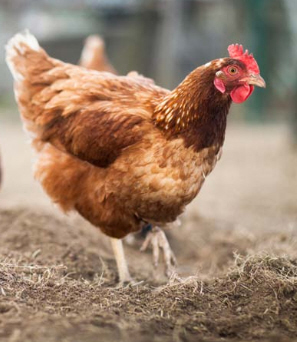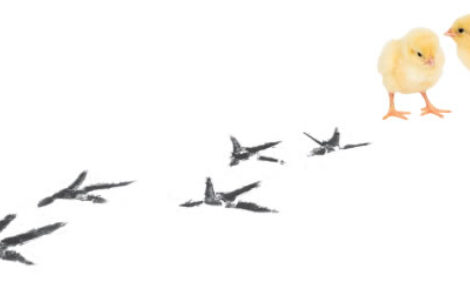



Development of Integrated Livestock Breeding and Management Strategies
Among the projects described in 'A Decade of EU-funded Animal Production Research' from the European Commission is one on the development of integrated livestock breeding and management strategies to improve animal health, product quality and performance in European organic and 'low input' milk, meat and egg production.The project, 'LowInputBreeds' aims to develop integrated livestock breeding and management strategies to improve animal health and welfare, product quality and performance in European organic and ‘low input’ milk, meat and egg production. This will be achieved through research, dissemination and training activities. Research will identify robustness and product quality traits, as well as innovative breeding concepts.
The project, costing the European Commission €6 million, was scheduled to take 60 months, starting in May 2009.
Problem
Almost without exception, breeding goals in livestock production have in recent years been dominated by demands for intensive systems striving for higher yields. Thanks to progress in animal breeding, today’s dairy cows, pigs and poultry are capable of high outputs but only when receiving high nutritional and veterinary support.
The report states that, under organic or low-input management, product quality, health, welfare and fertility deteriorate with modern genotypes. Unfortunately, reduced input systems are in the minority and there is insufficient demand to encourage breeding companies to address these weaknesses. Instead, they attempt either to minimise the negative impact on high input animals, or use traditional unimproved breeds – neither of which is ideal.
It is increasingly recognised that breeding priorities differ between high and 'low-input' systems and the latter tend to be neglected. Recent studies - such as the FP6 project, QualityLowInputFood - found that livestock breeds (and breeding systems) developed for 'high-input' conventional production lack specific:
- 'robustness' traits required for optimum performance in organic and ‘low input’ production systems, e.g. extensive outdoor grazing and free-range
- product quality traits (including nutritional, sensory and animal welfare related quality parameters) demanded by the organic and 'low-input' sector.
However, breeding concepts, methods and programmes focused on the needs of organic and other 'low-input' systems have not been fully addressed by R&D.
This project is developing both 'robustness' (resistance to biotic and abiotic stress factors, survival of young animals, longevity, fertility as well as 'product quality' traits (including ethical qualities related to animal welfare and environmental impact related traits) that have a higher priority in organic/'low-input' compared to 'high-input' conventional systems.
The project has four main science and technology objectives:
- To develop and evaluate innovative breeding concepts for five livestock production systems (dairy cows, dairy and meat sheep, pigs and laying hens) and design species-specific breeding strategies for different macroclimatic regions in Europe.
- To integrate the use of improved genotypes with innovative management approaches that include improved diets, feeding regimes and rearing systems. This will focus on issues (e.g. mastitis and parasite control, animal welfare problems) where breeding or management innovations alone are unlikely to provide satisfactory solutions.
- To identify potential economic, environmental, genetic diversity/plasticity and ethical impacts of the project to ensure they conform to societal priorities and consumer demands/expectations, and are acceptable to producers.
- To establish an efficient training and dissemination programme aimed at rapid exploitation and application of project deliverables by the organic and 'low-input' livestock industry.
Expected Results
Many studies are ongoing, although some findings have been published. Provisional findings are:
Laying hens
Farmer workshops in Switzerland and the Netherlands identified an 'ideal hen' for low-input systems. This hen should have a lower peak production and higher eating capacity, relative to modern hybrids, and would not display smothering behaviour or feather pecking. Many participants described the ideal hen's mentality as 'optimistic', 'not stupid', 'bold and assertive'.
A dataset of 276 free-range and organic poultry units in Switzerland, France and the Netherlands shows a wide range of genotypes with clear differences in flock and farm size, and housing system, between the three countries. Production was similar, except for organic flocks in the Netherlands, which had lower egg production and higher mortality. Comparing countries and production systems, white hens and mixed flocks (in Switzerland) perform better than silver hens, which had higher mortality and more poorly feathered birds.

Dairy cows
The accuracy of genomic selection is greater for high heritability traits such as milk yield. However, the expected benefits, in terms of relative gains in accuracy of estimated breeding values, are likely to be greater for low-heritability traits, such as those related to fertility.
Sheep
Sainfoin is effective in parasite control in pre-lambing ewes, reducing the faecal egg output by about 70 per cent compared to forage without tannins. However, this effect is transient, disappearing within two weeks of feeding ending. Tannin-rich concentrates given at this time are not effective in reducing egg output.
The timing of pasture access for lambs in Sicily influences meat quality. Lambs restricted to grazing during mornings only have higher levels of indol in carcass fat than those with access to pasture in the afternoons or throughout the day. The latter have a healthier fatty acid profile than housed lambs, or those with restricted access to grazing.
Pigs
Sow productivity and carcass quality of traditional breeds appear unsuitable for the commodity pork market. However, for niche markets, the quality of meat for these breeds adds value. Additionally, the dark skin of many traditional breeds offers a greater resistance to sunburn and might be an advantage in hotter climates.
Heat stress tolerance can be measured by reproductive performance. This has been identified in a large dataset (100,000 records) collected on farms in Portugal and Spain. For farrowing rate, heat stress heritabilities range from 0.02 to 0.05.
Potential Applications
The project will help reduce production problems and improve animal health and welfare in European organic and 'low-input' production systems, while improving the quality of milk, meat and eggs for consumers.
Many findings could also benefit for livestock systems currently relying on high inputs.
As pressure on prices for feed, fertiliser and other resources increase worldwide, many intensive units are now starting to question high inputs.
Project Coordinator
Gillian Butler - University of Newcastle, Nafferton Ecological Farming Group, UK
Partners
University of Newcastle upon Tyne, UK; Forschungsinstitut fur Biologischenlandbau Stiftung, CH; Asg Veehouderij bv, NL; Institut National de la Recherche Agronomique, FR; Georg-August-Universitaet Goettingen Stiftung Oeffentlichen Rechts, DE; Københavns Universitet, DK; Univerza v Ljubljani, SI; Universite Catholique de Louvain, BE; Swissgenetics, CH; Schweizer Braunviehzuchtverband, CH; Applied genetics network, CH; Institute for Pig Genetics BV, CH; Pigture Iberica S.L., ES; Institut de Sélection Animale BV, NL/FR; Institut National Reserche Agronomique de Tunisie, TN; Lincoln University, NZ; University Of Guelph, CA; Federal University of Viçosa, BR; Milan University, Department of Veterinary Science and Public Health (DIVET); Animal Production Research Centre, Nitra, SK; Irish Agriculture and Food Development Authority, IE.
References/publications
Kramer M. et al. 2011. Estimation of genomic breeding values for traits with high and low heritability in Brown Swiss bulls. 62nd Annual Meeting of EAAP, Stavanger, Norway. 2011.
Vasta et al. 2012. Effect of morning vs. afternoon grazing on intramuscular fatty acid composition in lamb. Meat Science, 90(1):93-98.
Bloemhof S. et al. 2012. Heat stress effects on farrowing rate in sows: Genetic parameter estimation using within-line and crossbred models. Journal of Animal Science, 90:2109-2119.
Leenstra F. et al. 2012. Performance of commercial laying hen genotypes on free range and organic farms in Switzerland, France and The Netherlands. British Poultry Science, 53(3):282-290.
Leenstra F. et al. 2011. Ethical Consideration in Livestock Breeding. Proceedings of the First LowInputBreeds Symposium, Wageningen, The Netherlands, March.
November 2013








